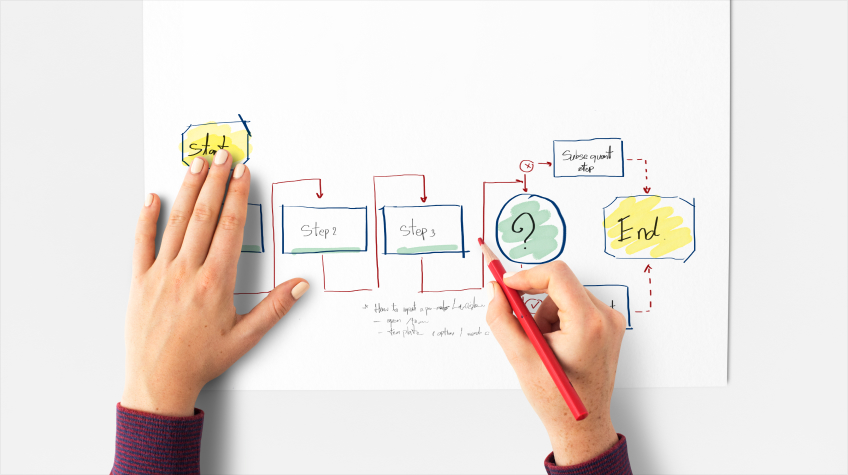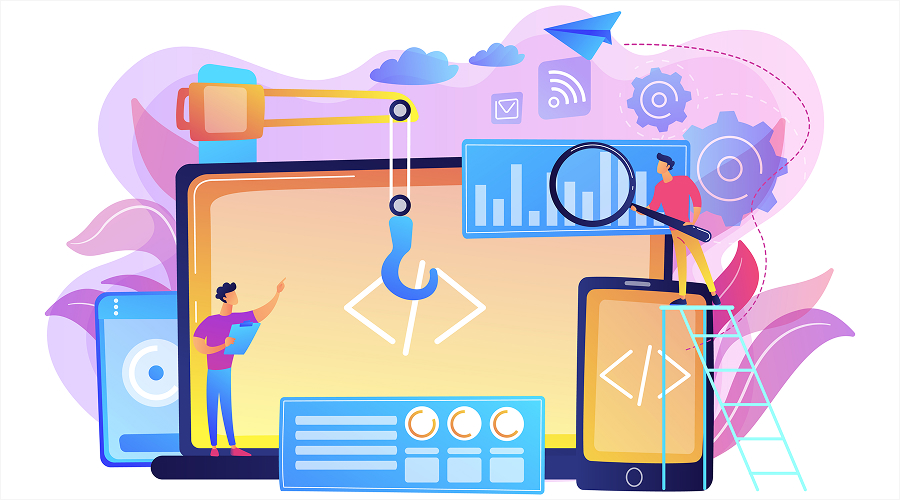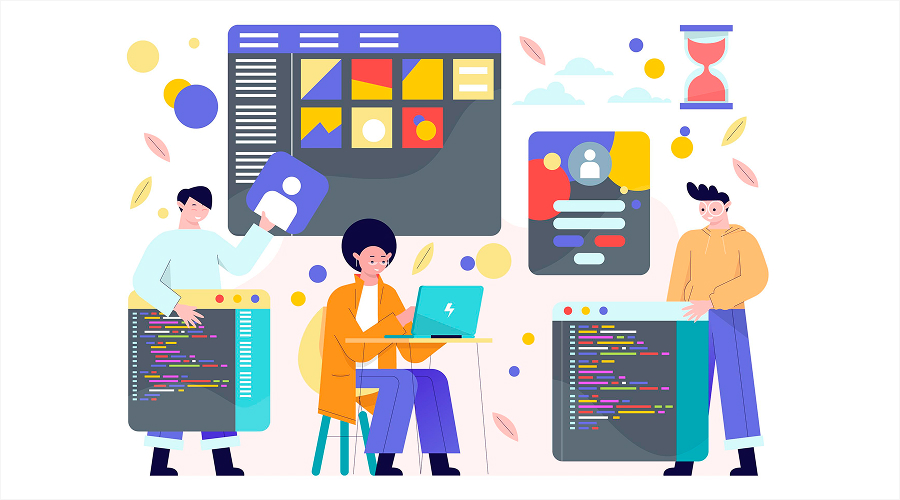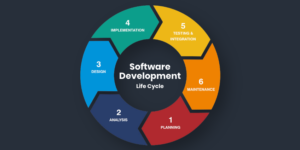
The software development process is an organized way of creating, examining, and maintaining software. It follows logical procedures and employs various methodologies so that the software is foolproof, scalable, and easy to use. This blog describes the entire process in simple terms and how a software development company can be useful in streamlining the project.
We live in a software-driven world. From mobile applications, mobile web, and financial systems to health systems, everything is driven by software. However, creating a good software product means more than just writing code. It is all about planning, construction, testing, and maintaining it systematically. It is referred to as the software development process.
The process will assist software developers and teams in developing quality software with efficiency. It makes sure the end product satisfies the needs of the user as well as the business. Regardless of whether it is a simple application or a complex enterprise software development, it is the right process that will make it a success. Most of the companies prefer to engage an established software development company to facilitate this journey.
What is the Software Development Process?

The software development process is a sequence of actions that development teams follow to design, build, test, and deliver a software product. These steps involve the identification of user requirements, the design of technical aspects, writing code, feature testing, and the release of a final product.
It also involves developers, designers, testers, and business analysts who act in a systematic and planned manner. Such a systematic process will minimize mistakes, meet the schedules, and enhance software quality. Sticking to a proven process, either in-house or with the help of a software development company, matters a lot in the overall result.
Key Stages of the Software Development Process

1. Requirement Gathering and Analysis
This is the initial and most invaluable phase. Software developers sit together with the clients, users, or stakeholders to determine what the software is supposed to accomplish. They assemble the detailed requirements, including features, user expectations, and business requirements.
Analysts read such inputs and make written notes of everything observed. The aim is to prepare a Software Requirement Specification (SRS) document. This turns out to be the basis of the whole project. Effective communication at this level prevents late mix-ups, delays in development work, and saves time and money.
2. Planning
The planning stage follows after the requirements are identified. During this step, the project roadmap is drawn by the team. The team establishes schedules, draws budgets, allocates duties, and selects tools and tech. Risk analysis is also conducted to determine potential obstacles. Everyone is informed by the project managers of their responsibilities. With the right planning, a project is more likely to generate results as well as use the resources efficiently. This step is vital to the success of the projects.
3. Design
It is time to design the software. This phase is the process of developing the structure of the software solution. Developers determine the interactions of various components in the software. The visual layout and the user interface are also handled by the UI/UX designers. This phase will produce design documents, data flow diagrams, wireframes, and database design. The aim is to develop a guideline based on which the developers can code. An effective design prevents technical problems in the process of development and enhances the user interface.
4. Development
This is when the real coding starts. The designs and requirements are then used to implement the software code by developers. This may take weeks or, in some cases, months, depending on the size of the project. Depending on the needs and the platform, teams can work with any generic programming language such as Python, Java, JavaScript, or C#. The code is normally organized into modules or components.
Changes are managed with collaboration tools and version control systems. Part of the code is also tested by developers during development. Clear coding and teamwork are a must in clean, bug-free software.
5. Testing
Once developed, software is put through tough testing. The software is tested by the quality assurance (QA) teams for bugs, glitches, and security concerns. Developers also test various functions, user input, as well as system behavior in a bid to make sure that everything is operating appropriately. Test types consist of unit testing, integration testing, system testing, system Integration testing, and user acceptance testing (UAT). Manual and automated testing techniques are mostly combined.
6. Deployment
When the test is cleared, the software becomes ready to go live. Deployment is the practice of putting or making the software accessible on servers or making it accessible through avenues like Google Play, App Store, or the web. In large systems, deployment occurs in phases or through continuous delivery. During deployment, monitoring tools are normally applied to monitor any real-time failures.
An efficient deployment process also means that users are able to use the software without any difficulty. A trustworthy software development company will also provide post-deployment assistance to make sure everything goes well.
7. Maintenance and Updates
The process does not stop after launch. Software requires constant updates to eliminate bugs, introduce new functions, or enhance functionality. The developers observe the user feedback and system operation in order to identify issues. Security releases and version releases are issued when necessary. Long-term support makes the software work in an adequate way and stay safe. A rapidly evolving tech environment is all about continuous improvement.
Also Read: Different Types of Software Development: A Complete Guide
Popular Software Development Methodologies

1. Waterfall Model:
The waterfall model is end-to-end in nature, with one stage being completed before the other can start. It can be controlled with ease, but may not fit dynamic needs. It is most effective on small projects with definite objectives and determined scopes. This organized and definite methodology is followed by convention teams and government projects.
2. Agile Methodology
Agile is a phased method where the project is divided into small, manageable tasks known as sprints. In every sprint, there is planning and development with testing. Agile promotes flexibility and continuous feedback, so it is the most suitable to apply to projects where the goals are changing. It encourages teamwork, quicker response, and constant enhancement. Agile is favored by many modern software development companies due to its flexibility.
3. Scrum
Scrum is a widespread Agile framework founded on time-boxed repetitions. The stand-up meetings are carried out by the teams daily, and the work is arranged as sprints, commonly lasting 2 to 4 weeks. There are some defined roles to guide the process as Product Owner and Scrum Master. Scrum promotes feedback and interaction between the team and assists the teams to have their reactions to change rapidly and to deliver working software within a shorter period of time.
4. DevOps
DevOps is a process that merges development and IT operations to accelerate software delivery. It lays emphasis on continuous deployment, continuous integration, and automation. IT professionals and developers share the processes in development to release. Tools. such as Jenkins and Docker, allow you to automate the work. DevOps increases teamwork and minimizes mistakes, and makes software updates quick and consistent with a minimal level of interruption.
5. Lean Development
The purpose of lean development is to minimize waste and provide value in the short term. It focuses on small teams, frequent cycles, and continuous reaction of users. It is all about constructing what is only needed, increasing the efficiency, and hastening delivery. Lean works very well in startups and other business ventures that require quick development using minimal resources, yet have high quality and customer focus.
Also Read: Agile vs Waterfall: Best Software Development Methodologies?
Conclusion
Software development is a planned procedure in which an idea is translated into a functioning program. Regardless of whether you are creating a small app or a complicated enterprise platform, you should have proper knowledge of the process. With the help of the systematic approach, the correct methodology, and a reputable software development company, you can develop software that is safe, capable of scaling, and enjoyed by users. To turn your idea into a successful, high-performing solution, contact us today and let our experts guide you through every step.






